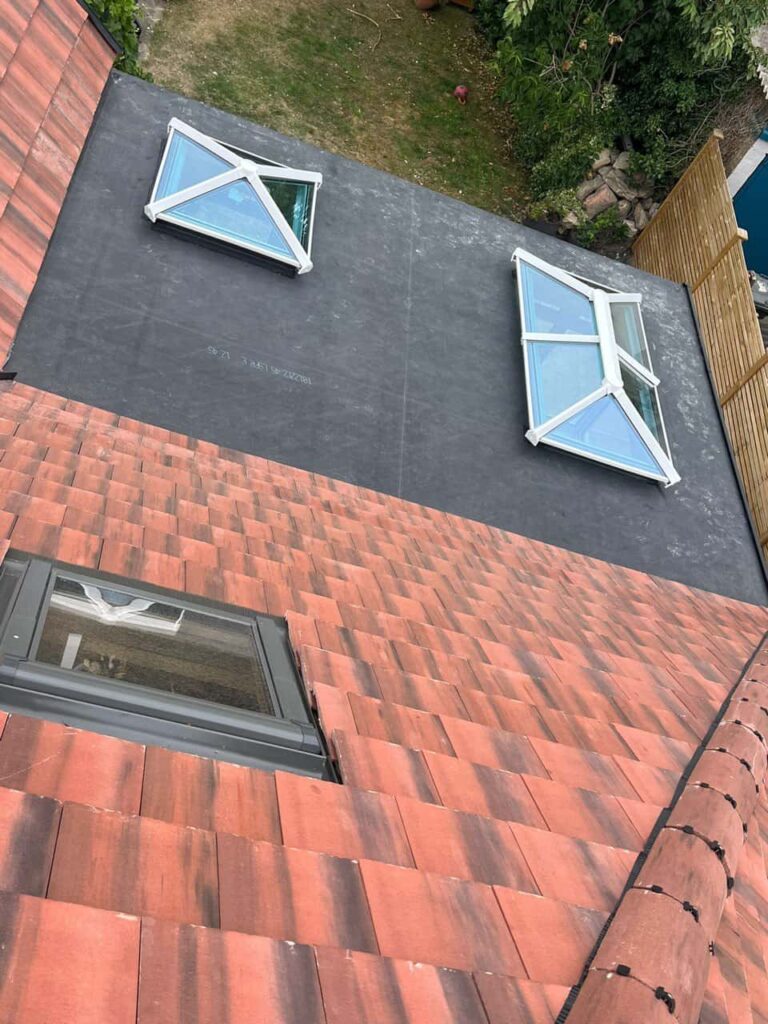Storms can leave a trail of destruction in their wake, and one of the most vulnerable parts of your home during severe weather is the roof. High winds, heavy rain, and falling debris can cause significant damage that, if not addressed promptly, can lead to even bigger problems down the line. At Cambourne Roofing Repairs, located in Cambourne, Cambridgeshire, we specialise in storm damage repairs, ensuring your roof is restored to its full strength and integrity. In this blog post, we’ll provide essential tips for handling roof repairs after a storm, helping you protect your home and avoid costly issues in the future.
Assessing the Damage: The First Step
After a storm has passed, it’s crucial to assess the extent of the damage to your roof as soon as it’s safe to do so. Here’s what to look for:
- Missing or Damaged Tiles: Strong winds can dislodge or break roof tiles, leaving your roof exposed to the elements. Check for any missing, cracked, or chipped tiles, as these can lead to water infiltration.
- Leaks and Water Stains: Inspect your attic and ceilings for any signs of leaks, such as water stains, damp patches, or peeling paint. These are often the first indicators that your roof has been compromised.
- Gutter and Downspout Damage: Storms can clog gutters with debris or cause them to become detached from the roof. Ensure your gutters and downspouts are intact and free of obstructions to allow proper water drainage.
- Debris on the Roof: Fallen branches or other debris on your roof can cause damage to the roof surface and should be removed promptly. However, it’s important to avoid walking on the roof yourself—leave this task to professionals who have the right equipment and experience.
- Flashing and Chimney Issues: Check the flashing around chimneys, vents, and skylights for any signs of damage or dislodgement. Damaged flashing can allow water to seep into your home, leading to significant interior damage.
Immediate Actions to Take
If you’ve identified damage to your roof after a storm, it’s important to take immediate action to prevent further issues:
- Temporary Protection: If the storm has caused significant damage, consider placing a tarpaulin or other protective covering over the affected areas to prevent water ingress until professional repairs can be carried out.
- Document the Damage: Take photos and make notes of all visible damage. This documentation will be valuable when filing an insurance claim, helping to ensure you receive the coverage you’re entitled to.
- Avoid DIY Repairs: While it may be tempting to try and fix minor issues yourself, roof repairs are best left to professionals. Improper repairs can lead to further damage and may even void your roof’s warranty.
- Contact Your Insurance Company: Report the damage to your insurance provider as soon as possible. They may send an adjuster to assess the damage and guide you through the claims process.
Professional Roof Repair: Why It’s Essential
When it comes to storm damage, professional roof repair is not just recommended—it’s essential. Here’s why:
- Expert Assessment: A professional roofer can conduct a thorough inspection of your roof, identifying both obvious and hidden damage. This ensures that all issues are addressed, preventing future problems.
- Quality Repairs: At Cambourne Roofing Repairs, we use high-quality materials and proven techniques to restore your roof to its pre-storm condition. Our repairs are designed to last, giving you peace of mind that your home is protected.
- Safety: Roofing work can be dangerous, especially after a storm when the structure may be weakened. Our team is trained in safe working practices and equipped with the right tools to carry out repairs safely and efficiently.
- Insurance Liaison: We can work directly with your insurance company, providing detailed assessments and repair estimates to help you navigate the claims process smoothly.
Preventative Measures for the Future
Once your roof has been repaired, it’s important to take steps to protect it from future storms:
- Regular Inspections: Schedule regular roof inspections to catch any potential issues early. This is particularly important before and after the storm season.
- Gutter Maintenance: Keep your gutters clean and free of debris to ensure proper water drainage, reducing the risk of water damage during heavy rain.
- Tree Trimming: Trim back any overhanging branches that could fall onto your roof during a storm. This simple step can prevent a lot of damage.
- Roof Reinforcement: Consider reinforcing your roof with stronger materials or additional fastenings, especially if you live in an area prone to severe weather.
Conclusion
Storms can be unpredictable and unforgiving, but with the right approach, you can protect your home and avoid costly damage. At Cambourne Roofing Repairs, we’re here to help you every step of the way—from assessing storm damage to carrying out expert repairs and helping you prevent future issues. Don’t wait until it’s too late—contact us today to ensure your roof is ready to withstand whatever the weather throws at it. Your home is your biggest investment, and we’re here to help you protect it.
Call us on: 01954 776 277
Click here to find out more about Cambourne Roofing Repairs
Click here to complete our contact form and see how we can help with your roof.

